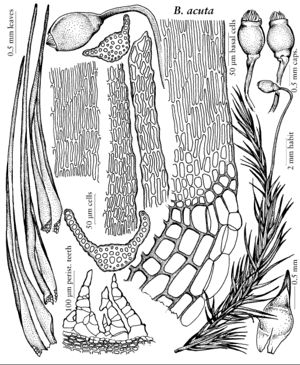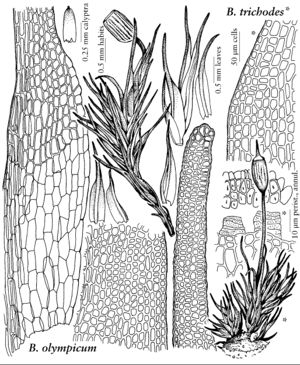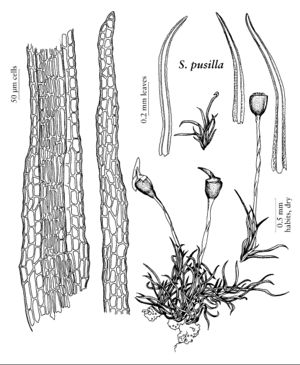Plants minute and gregarious, or larger, forming compact tufts and cushions, unbranched to rarely 2–3-branched, on rock, acrocarpous. Leaves twisted-spreading to stiffly erect when dry, generally erect-spreading to spreading-recurved, sometimes slightly curved when moist, linear to stoutly subulate from clasping base; margins plane, entire to denticulate; costa single, homogenous in transverse-section, ending near the apex to long-excurrent, distal leaf cells smooth, short; alar cells not differentiated to somewhat enlarged and colored. Seta straight, flexuose or cygneous. Capsule mostly erect, symmetric, cylindric-ovate to turbinate; peristome haplolepideous, of 16 triangular entire teeth, these reduced in some species, or absent.
Distribution
Widespread in temperate and polar regions.
Discussion
Genera 4, species ca. 44 (3 genera, 16 species in the flora).
Sporophytes are necessary for identifying the species of Seligeriaceae.
Selected References
None.
Lower Taxa
Illustrations
Key
| 1 | Capsules striate; peristome finely papillose or absent; annulus well-developed; calyptra mitrate | Brachydontium |
| 1 | Capsules smooth; peristome smooth or absent; annulus ill-formed; calyptra cucullate | > 2 |
| 2 | Alar cells not differentiated or sometimes enlarged; autoicous; calcareous rocks. | Seligeria |
| 2 | Alar cells reddish and inflated; dioicous; acid rocks. | Blindia |


